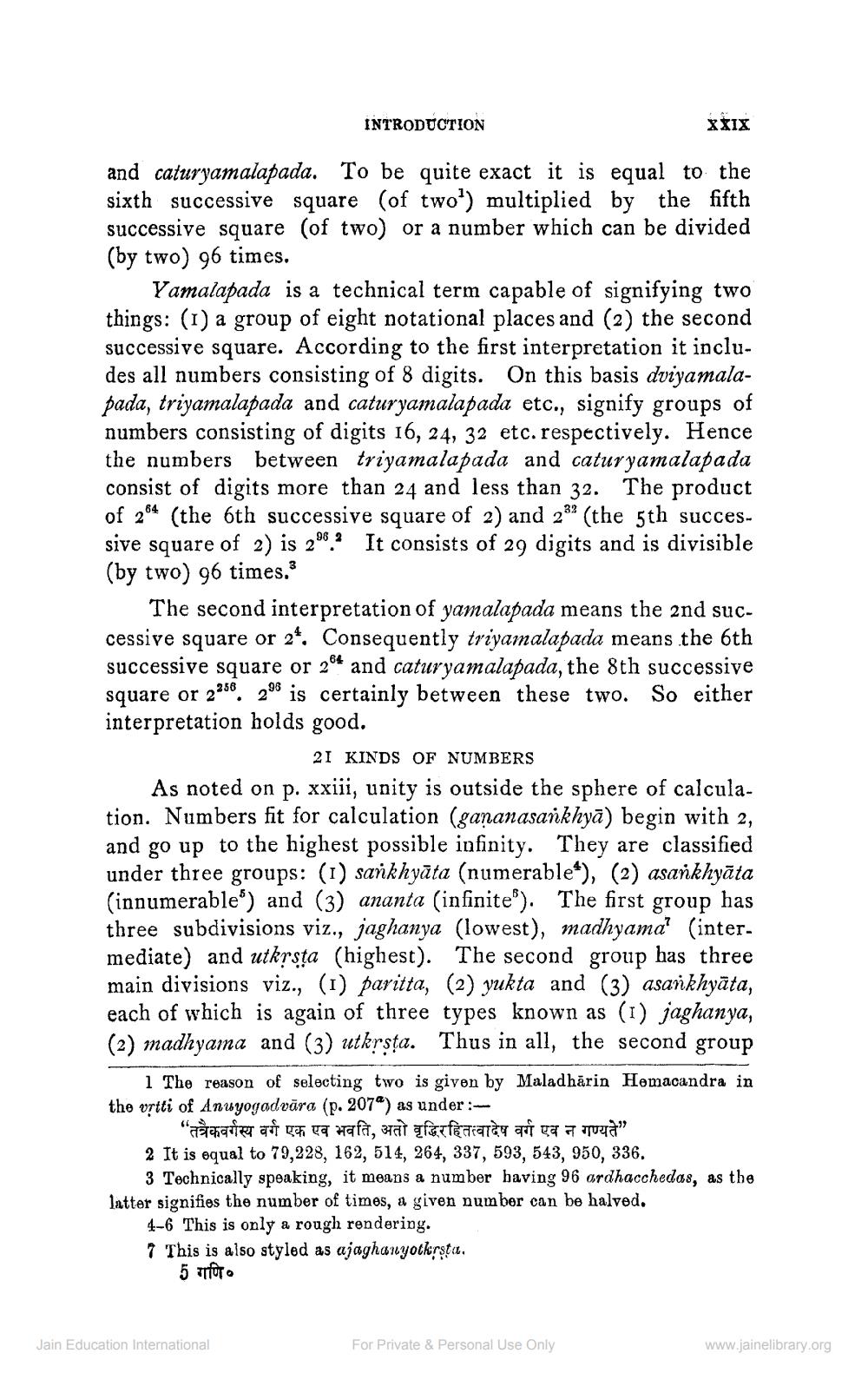________________
INTRODUCTION
XXIX
and caturyamalapada. To be quite exact it is equal to the sixth successive square (of two) multiplied by the fifth successive square (of two) or a number which can be divided (by two) 96 times.
Yamalapada is a technical term capable of signifying two things: (1) a group of eight notational places and (2) the second successive square. According to the first interpretation it includes all numbers consisting of 8 digits. On this basis dviyamalapada, triyamalapada and caturyamalapada etc., signify groups of numbers consisting of digits 16, 24, 32 etc. respectively. Hence the numbers between triyamalapada and caturyamalapada consist of digits more than 24 and less than 32. The product of 264 (the 6th successive square of 2) and 23(the 5th successive square of 2) is 200. It consists of 29 digits and is divisible (by two) 96 times.
The second interpretation of yamalapada means the 2nd successive square or 24. Consequently triyamalapada means the 6th successive square or 264 and caturyamalapada, the 8th successive square or 2358. 208 is certainly between these two. So either interpretation holds good.
21 KINDS OF NUMBERS As noted on p. xxiii, unity is outside the sphere of calculation. Numbers fit for calculation (gananasankhyā) begin with 2, and go up to the highest possible infinity. They are classified under three groups: (1) sankhyāta (numerable*), (2) asankhyāta (innumerable") and (3) ananta (infinite). The first group has three subdivisions viz., jaghanya (lowest), madhyama? (intermediate) and utkrsta (highest). The second group has three main divisions viz., (1) paritta, (2) yukta and (3) asankhyāta, each of which is again of three types known as (1) jaghanya, (2) madhyama and (3) utkrsța. Thus in all, the second group
i The reason of selecting two is given by Maladhārin Homacandra in the ortti of Anuyogodvāra (p. 207") as under :
"तत्रैकवर्गस्य वर्ग एक एव भवति, अतो वृद्धिरहितत्वादेष वर्ग एव न गण्यते" 2 It is equal to 79,228, 162, 514, 264, 337, 593, 543, 950, 336.
3 Technically speaking, it means a number having 96 ardhacchedas, as the latter signifies the number of times, a given number can be halved.
4-6 This is only a rough rendering. 7 This is also styled as ajaghanyotkrsta,
5 foto
Jain Education International
For Private & Personal Use Only
www.jainelibrary.org




